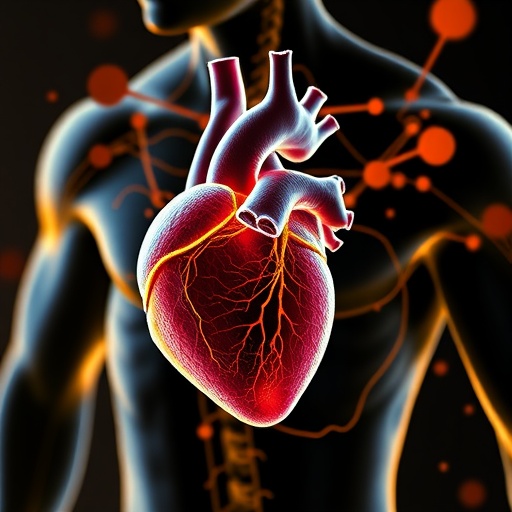In recent years, the field of pharmacology has witnessed remarkable advancements, particularly in the development of high-performance analytical techniques that allow for the simultaneous detection of complex drug compounds in biological samples. One such innovative approach is detailed in the groundbreaking study conducted by Chen, Chen, and Wu, which introduces a novel ultraperformance liquid chromatography-tandem mass spectrometry (UPLC-MS/MS) method designed for the precise measurement of iloperidone and its metabolites in rat plasma. This advancement holds promising implications for understanding drug interactions and optimizing therapeutic strategies.
Iloperidone, an atypical antipsychotic agent, has garnered attention due to its efficacy in treating schizophrenia. However, the therapeutic potential of iloperidone can be significantly influenced by its pharmacokinetic properties, particularly through its metabolism and potential interactions with other pharmaceutical compounds. The study emphasizes the necessity of utilizing sophisticated analytical methodologies to explore these aspects in a reliable and high-throughput manner.
The research team’s UPLC-MS/MS technique illustrates an innovative shift in analytical chemistry, employing cutting-edge technology that enhances the sensitivity and specificity of drug detection. This method goes beyond traditional analytical approaches, allowing researchers to achieve simultaneous analysis of iloperidone and its metabolites, significantly reducing the time and resources typically required in pharmacological studies.
One of the notable aspects of the UPLC-MS/MS method lies in its ability to effectively separate and quantify multiple compounds within a complex biological matrix. This capability is particularly crucial in pharmacokinetics where the interplay of drugs can complicate the interpretation of results. By providing fast and accurate measurements, this method streamlines the process of pharmacokinetic analysis, allowing for quicker insights into drug interactions and their consequent clinical implications.
The study’s findings are not only significant in advancing analytical methods but also in enhancing our understanding of the metabolic pathways of iloperidone. The incorporation of this method into pharmacological research has the potential to illuminate previously underexplored aspects of drug metabolism, paving the way for improved therapeutic regimens and informed clinical decisions. As iloperidone undergoes metabolism in the body, it generates various metabolites, some of which may exhibit pharmacological activity or toxicity. Therefore, understanding the full spectrum of these metabolites is essential for optimizing drug therapy.
Furthermore, the implications of this research extend to clinical practices. A thorough understanding of drug-drug interactions is vital for minimizing adverse effects and ensuring patient safety. With the increased use of polypharmacy in treating conditions such as schizophrenia, having a robust analytical tool to assess the interactions between iloperidone and other medications becomes imperative. This UPLC-MS/MS approach offers a guiding framework for clinicians to make well-informed decisions regarding treatment combinations.
In addition to its clinical significance, this study adds a layer of depth to the existing literature on iloperidone metabolism. The detailed analysis provided by the UPLC-MS/MS method highlights the importance of considering individual metabolic variations when prescribing iloperidone. Factors such as genetics and lifestyle can influence the metabolism of drugs, leading to variations in drug effectiveness and the risk of side effects. This highlights the burgeoning field of personalized medicine, where treatments are tailored to individual patient needs based on their specific metabolic profiles.
Moreover, the researchers shed light on the emerging concept of drug-drug interactions during their assessment. Understanding how iloperidone interacts with other pharmaceuticals is crucial as it can modify its therapeutic efficacy. This could take the form of either potentiating or diminishing the effects of either drug. By utilizing the UPLC-MS/MS method, the researchers can construct a comprehensive mapping of potential interactions, thereby allowing healthcare professionals to navigate the complexities of multiple drug therapies more effectively.
Despite the promising advantages presented by this novel analytical approach, the research team acknowledges certain limitations. While the study employs rat plasma as a biological matrix, there is an inherent need to validate these findings in human studies to ensure their applicability in clinical settings. Additionally, the scalability of such analytical techniques for high-throughput applications remains a vital consideration as more compounds are analyzed simultaneously.
Going forward, the study sets a precedent for future research on iloperidone and similar pharmaceuticals, emphasizing the integration of innovative analytical methods in pharmacokinetic studies. Collaboration across disciplines, including pharmacology, analytical chemistry, and clinical practice, will be critical to optimize drug development processes and enhance patient outcomes.
As the field continues to evolve, embracing technologies like UPLC-MS/MS will be paramount in addressing the complexities associated with drug interactions and individual variability in metabolism. This research heralds a new era of precision medicine, where the focus on individual patient needs can lead to customized and more effective treatment strategies. The integration of advanced methodologies will ultimately contribute to better drug safety and therapeutic efficacy, ensuring a brighter future in pharmacological care.
The comprehensive exploration of the simultaneous detection of iloperidone and its metabolites offers a ray of hope for those affected by schizophrenia and similar psychiatric disorders, signaling an era where drug therapies are as nuanced as the conditions they aim to alleviate. As researchers continue to uncover the intricate details of drug metabolism and interactions, one thing remains clear: the future of pharmacology is undeniably intertwined with technology, offering unprecedented promise for advancing human health.
Subject of Research: Novel UPLC-MS/MS Method for Analyzing Iloperidone in Rat Plasma
Article Title: Simultaneous determination of iloperidone and its metabolites in rat plasma using a novel UPLC-MS/MS method: an application for drug-drug interaction.
Article References: Chen, X., Chen, D., Wu, H. et al. Simultaneous determination of iloperidone and its metabolites in rat plasma using a novel UPLC-MS/MS method: an application for drug-drug interaction. BMC Pharmacol Toxicol 26, 200 (2025). https://doi.org/10.1186/s40360-025-01037-4
Image Credits: AI Generated
DOI: https://doi.org/10.1186/s40360-025-01037-4
Keywords: Iloperidone, pharmacology, UPLC-MS/MS, drug-drug interaction, metabolites, personalized medicine.
Tags: advanced analytical techniques in pharmacologyatypical antipsychotic drug analysisbiological sample analysis in pharmacologycutting-edge technologies in analytical chemistryhigh-performance liquid chromatographyiloperidone pharmacokineticsimplications of drug interactions on therapyinnovative approaches in drug measurementoptimizing therapeutic strategies for schizophreniasensitivity and specificity in drug detectionsimultaneous detection of drug metabolitesUPLC-MS/MS method for drug interactions





